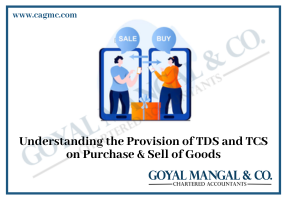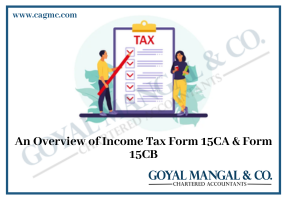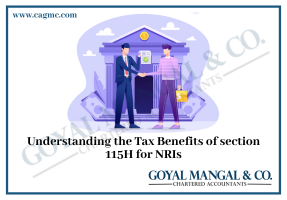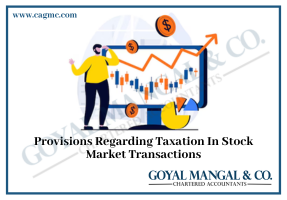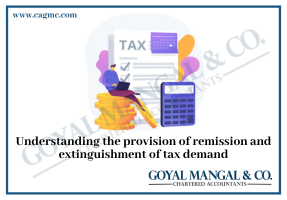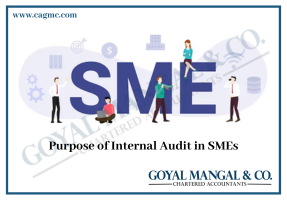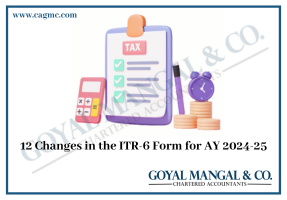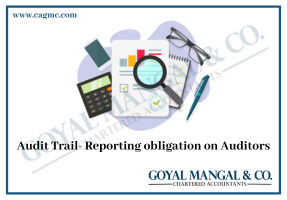
The Indian government collects a variety of taxes from both individuals and businesses. The Indian government is working to broaden the tax-payer base and ensure that no individual or corporation earning a significant profit is exempt from paying income tax. All such taxes owed by businesses fall into one of two categories: direct taxes or indirect taxes. The Minimum Alternate Tax (MAT) is a tax that is paid by businesses and classified as an indirect tax. The tax paid by all companies that fall within the indirect tax category is known as the Minimum Alternate Tax. This tax was enacted to ensure that no taxpayers with a significant amount of income were able to avoid paying taxes due to any exceptions.
|
Table of contents |
What is Minimum Alternate Tax?
Minimum Alternate Tax, or MAT, is a provision indirect tax law that restricts tax exemptions granted to businesses, requiring them to pay a minimum amount of tax to the government. The Finance Act of 1987, having effect from the assessment year 1988-89, established MAT in response to a rise in the number of zero-tax-paying businesses. It was afterward revoke by the Finance Act of 1990 and then rehabilitate by the Finance (No. 2) Act of 1996. Section 115JB states, all businesses must pay corporation tax that is at least equal to the higher of the following:
- Regular Tax Liability: It is calculated according to the Income Tax Act’s normal rules, i.e. by applying relevant tax rate to the company’s taxable income. According to the 2022-2023 Budget, the Ministry of Finance has altered the company tax rates (Mention further in the article).
- MAT (Minimum Alternate Tax): For fiscal year 2019-20, tax is purposive at 15% (formerly 18.5%) on book profit + applicable and surcharge.
Basic features of Minimum Alternate Tax
- Advance payment of tax: If the tax liability for definite FY is Rs.10000 or more, then every taxpayer is bind to pay tax in advance as under the Income Tax Act. Similarly, under section 115JB of the Income Tax Act, all businesses must pay advance tax.
- MAT Applicability in Special Economic Zones (SEZs): MAT directives did not apply to income generated by companies through operations in SEZs when it was first introduced. The Finance Act, 2011 amended, adding a provision that made Section 115JB apt to all companies. Those are earning profits from operations in SEZs.
- Tax Credits: If a firm pays minimum alternate tax instead of regular tax under the MAT clause, and the tax paid is higher than the tax possess, the surplus is given back to the corporation as a Tax Credit. The difference between the tax computed under the normal provisions of the Income Tax Act and the tax calculated under the MAT provisions of the Act is the MAT credit. Under the basic provisions of the Income Tax Act, an excess of tax credit may be persevere. And also set off in the financial year in which the firm required to pay tax. Subsequently, credit can be persevering. And also set-off for 10 consecutive assessment years succeeding the year in which the tax credit first ensue.
- MAT Report: All enterprises that are mandatory to pay Minimum alternate tax must submit a MAT report in accordance with Form 29B. This report should be hand out in conjunction with the ROI.
To whom MAT is applicable?
All companies whether private or public irrespective of whether Indian or foreign are liable to pay MAT if the income tax payable (including cess and surcharge) as per the provisions of the Income Tax Act is less than 15% of the book profit plus cess and surcharge.
What are the exceptions of MAT?
- MAT does not apply to any income a corporation receives from its life insurance operation or to shipping income subject to tonnage taxation. Sections 115V through 115VZC of the Income Tax Act of 1961 cover the tonnage taxation system.
NOTE– As per tax amendments made in the Finance Act 2016 with retrospective effect from 1st April 2001, MAT will not be applicable to a foreign company if:
- The company (assesses) is from a specific country or territory with which the Indian government has an agreement as per Section 90 (1). Or the company does not have a permanent establishment in the country as agreed to by the Central Government as per Section 90A(1),
- The company (assesses) is not mandatory to seek registration under any law currently in force relating to companies.
- MAT rules are not apply to a foreign firm whose total income consists of earnings and gains from enterprises described in sections 44AB, 44BB, 44BBA, or 44BBB of the Income Tax Act, according to section 115JB(4A).
What do you mean by MAT Credit?
However, the Minimum Alternative Tax (MAT) was initiated to collect taxes from tax-exempt businesses. It was also made to furnish a steady flow of revenue to the government. As a result, minimum tax urge in an FY where normal tax is lower than MAT. MAT paid earlier is titled to persevere and lower against normal tax to the extent of the difference between normal tax and MAT in FYs. Any remaining balance after such a set-off can persevere to future fiscal years. Likewise, MAT Credit is the name for this notion.
However, MAT Credit only perseveres up to 15 fiscal years from the year in which the MAT is paid. If the regular tax rate changes as a result of an order issued by the IRS, the MAT credit will change as well. Furthermore, any FTC in excess of AMT will Passover if the taxpayer has any foreign tax credit. Foreign tax credit (tax paid in foreign countries with which India has a bilateral or unilateral tax agreement).
Major MAT highlights under The Union Budget of 2022-2023
Finance Minister “Nirmala Sitharaman” put forward on Tuesday (1st Feb 2022) that cooperative societies’ Alternate Minimum Tax (AMT) take the edge off from 18.5 percent to 15 percent, bringing them in line with commercial corporations. On the other hand, for cooperative societies with a total income of more than 1crore but less than 10crore, the government has recommended lowering the surcharge from 12 percent to 7%.
Requirements for Reporting MAT
All taxpayers who are subject to the MAT must obtain a report from a Chartered Accountant in Form No. 29C, certifying that fine-tune total income and MAT put a figure on in accordance with the provisions of the Income-tax Act, and submit the report on or before the due date for filing the return of income. The report, together with the income tax return, can categorize electronically.
Conclusion
With the above overview, we can conclude that the government introduced the Minimum Alternate Tax to target businesses. Those businesses were making large profits by taking advantage of different deductions and exclusions under the Income Tax Act. Since the implementation of MAT, these businesses have been mandatory to pay a designated proportion of their profits as Minimum Alternate Tax.
